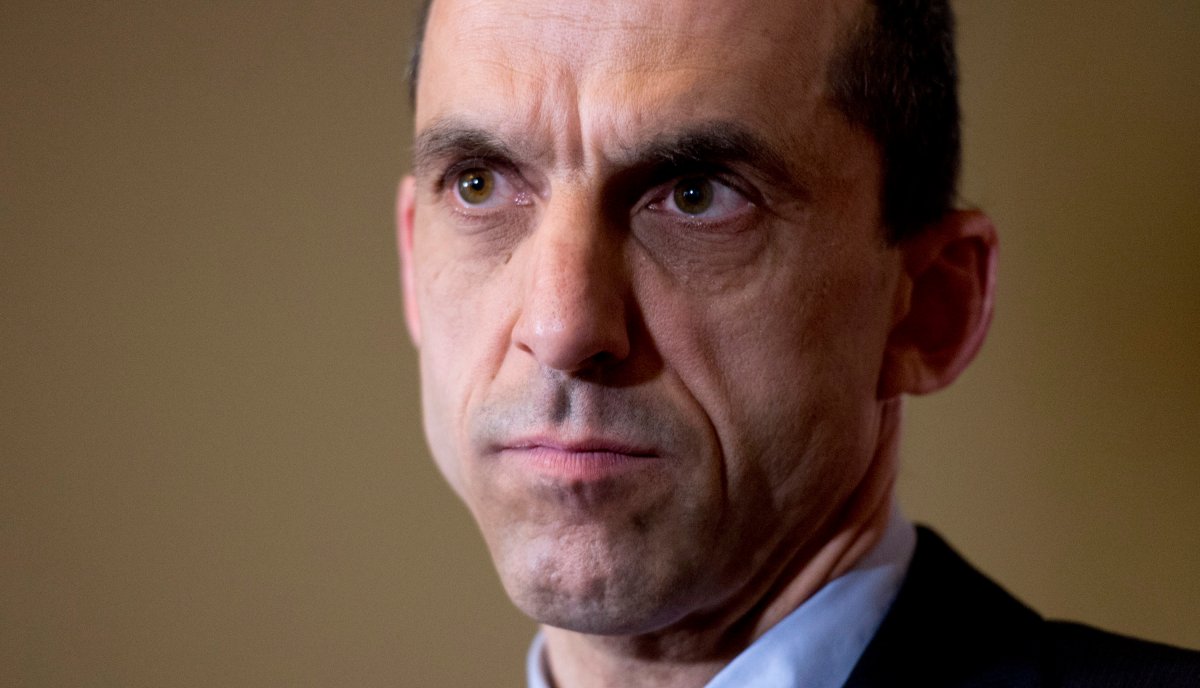OTTAWA – Public Safety Minister Steven Blaney says there’s no link between violence and double-bunking in prisons, and the Conservative government “won’t be afraid to use” the practice of housing two inmates in a cell for one.

“We don’t feel that prisoners are entitled to their own cell,” Blaney told a news conference Tuesday.
“Double-bunking…is a current practice, and if needed we won’t be afraid to use it.”
But that goes against the government’s own rules, which say double-bunking “must” be temporary. And Corrections Canada’s own memos cite a 70 per cent increase in violent incidents in a three-year period in a region where double-bunking doubled.
Blaney was responding to the spring auditor general’s report that found the Correctional Service of Canada’s plan to expand prisons will ease overcrowding in the short term, but not the long term.
READ MORE: Highlights of the Auditor-General’s spring 2014 report
The expansion plans were not based on accommodation requirements or offender populations, but rather where land was available at existing institutions, the report said.
As a result, the audit found, prisons will be over capacity again in a few years. And Corrections knows it. “Even after the construction is completed, CSC officials expect double bunking to continue,” the report says.
Kevin Grabowsky, national president of the Union of Canadian Correctional Officers, said double-bunking is making prisons less safe because it leads to more violence against staff.
“The violence is on the rise and it’s a big concern for, certainly, correctional officers,” he said.
Auditor General Michael Ferguson said the government’s own research suggest double bunking increases risks.
“Correctional Services Canada has identified themselves that with overcrowding there can be risks to security in their facilities,” Ferguson saidat a press conference Tuesday.
The prison service’s own policy says double-bunking “must” remain a “temporary accommodation measure” that should not exceed 20 per cent – unless the commissioner approves it.
Ferguson’s audit found that 26 per cent of offenders were being double-bunked in the Ontario and Prairie regions last year, some of them in segregation cells and cells smaller than 5 square metres, which is contrary to the intent of Corrections policy.
The costs of transferring inmates to less crowded prisons in the Pacific and Atlantic regions increased from $1.5 million for 529 offenders in 2010 to$3.4 million for 908 offenders in the first nine months of 2013.
Blaney cited “scientific” studies undertaken by CSC that demonstrate “there is no link between the rate of violence and double bunking.”
In a follow-up email, Blaney’s spokesman referred to a May 1 briefing note from CSC Commissioner Don Head that says double bunking has a “minimal impact” on the rates of violence in institutions – even though the data cited in the briefing note shows violence has increased alongside double-bunking.
“None of the incidents that we’ve seen, particularly some of the more serious ones, are directly linked to double-bunking at all,” Head says in the memo. They’re linked to the behaviours of individuals who are problematic.”
Head’s note cites a 2012 review that found double-bunking in the Prairie region more than doubled to 27 per cent in July 2012 from 12 per cent in 2009; incident rates increased by 70 per cent during the same period, the note says. It also says that “crowding affects the level of stress experienced by the offender and reduces the availability of programming.”
A separate CSC document suggests a “cell sharing assessment” with each offender before double bunking.
In his 35 years in the prison service, Grabowsky said, he’s never experienced as much violence as exists today, including inmates making weapons and throwing bodily fluids at guards.
“I’m certainly curious to see some of these scientific studies, but I know we’re living something that’s opposite to that study.”
NDP MP Malcolm Allen said the audit shows the Conservative government is “spending money poorly.”
“This is about the ability of this government to manage appropriately,” he said. “They said they would build cells, not to double-bunk, but to actually put people in individual bunks. And they still got it wrong.”
The CSC originally predicted prison populations would expand much more significantly due to tough-on-crime legislation passed in 2009.
But that didn’t happen, and so the government returned $1.48 billion earmarked for building new prisons and instead approved $751 million in 2009 over five years to expand existing ones.
As of March 2013, the prison population had risen to 15,270 inmates from 14,200 in 2009, even as crime rates fell during that same period. Originally, CSC predicted a 30 per cent increase, to 18,450 inmates.
The government also closed three facilities in 2012, including the notorious Kingston Penitentiary, stating it would save $120 million a year. The report found the closures will save only $86 million annually.



Comments